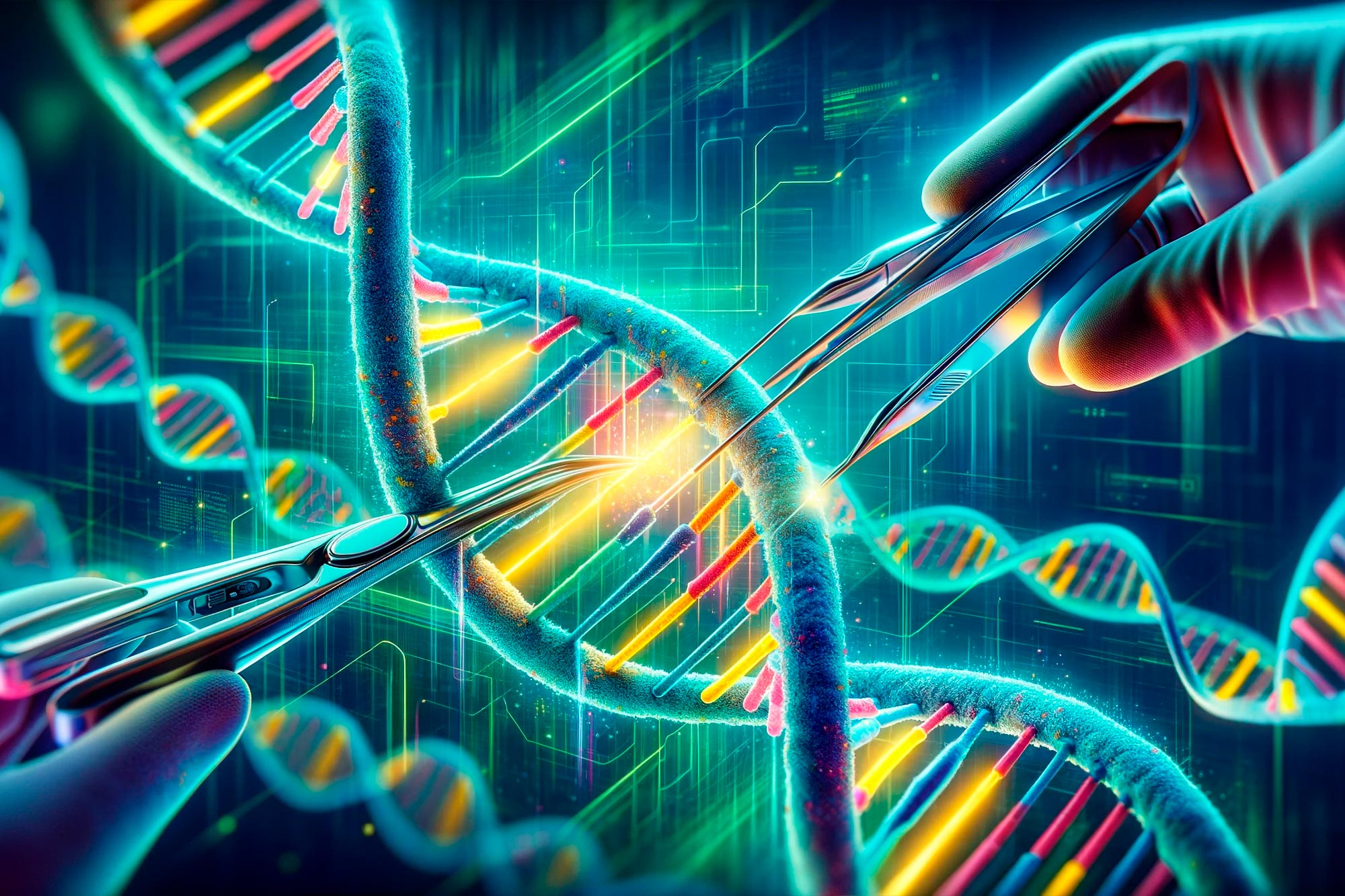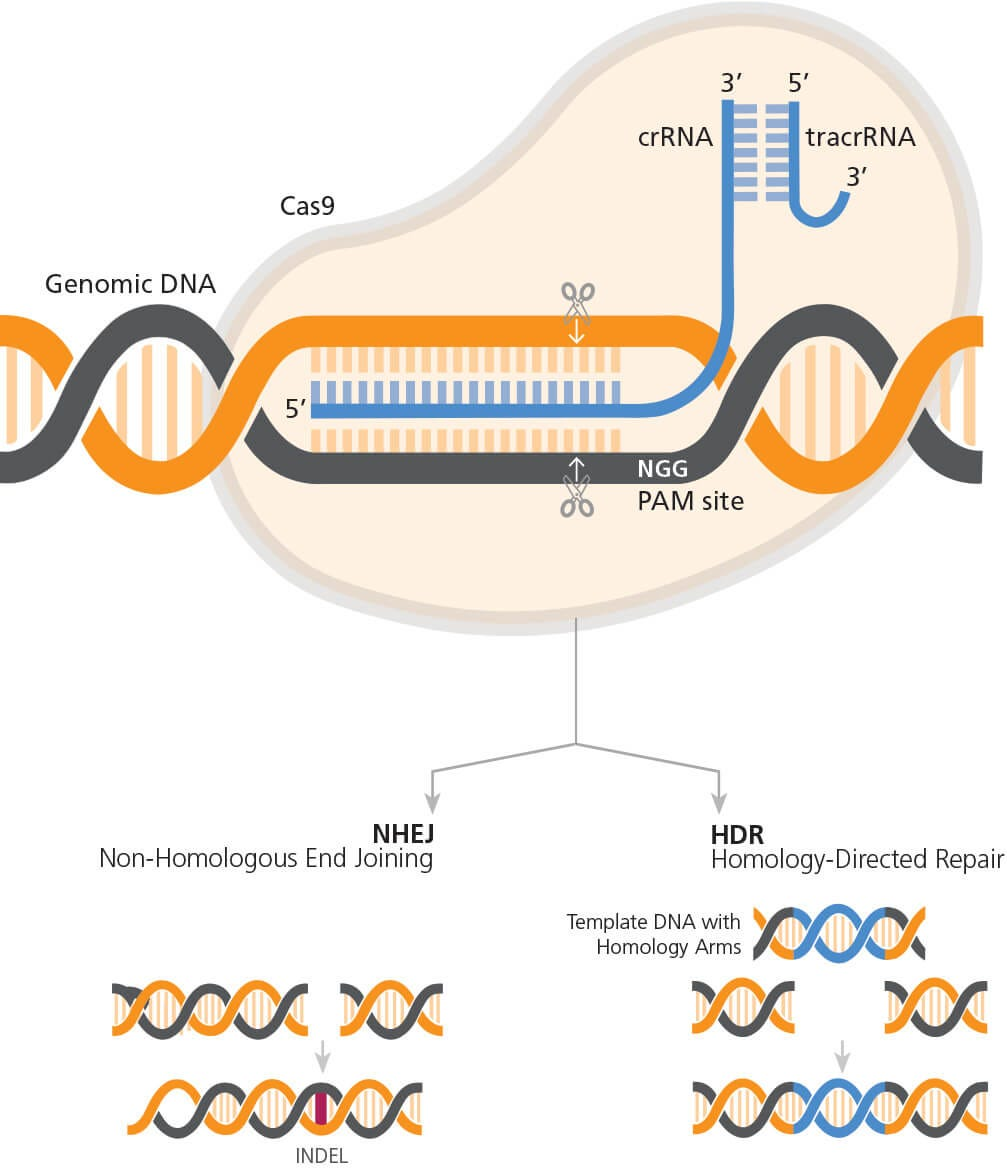Gene editing is revolutionizing the landscape of modern medicine, offering unprecedented potential for treating genetic diseases. With cutting-edge techniques such as base editing and prime editing spearheaded by visionary scientists like David Liu, researchers are now capable of correcting mutations at the molecular level with remarkable precision. This innovative approach builds on the powerful CRISPR technology, known for its role in cutting DNA, to enable more accurate manipulations without causing extensive damage to the genetic code. As we continue to explore the possibilities of gene editing, the implications for patients suffering from previously untreatable conditions are enormous, paving the way for a new era in disease management and treatment. The ongoing advancements promise not just hope but also the potential to rewrite the genetic destiny of millions worldwide.
The field of genetic modification encompasses a variety of methods, all aimed at enhancing our ability to manipulate DNA for therapeutic benefits. Techniques like targeted genome alteration and precision editing are gaining traction, offering alternatives to traditional genetic therapies. By employing advanced tools that allow for meticulous adjustments at the genetic level, researchers are discovering new ways to tackle ailments caused by genetic anomalies. This scientific frontier, which includes terminology such as genome editing and gene therapy, holds great promise for developing treatments for a wide range of health conditions. As the understanding and application of these methodologies evolve, the potential for significant breakthroughs in healthcare becomes more pronounced.
Revolutionizing Medicine with Gene Editing
Gene editing has emerged as a groundbreaking field in modern medicine, providing new hope for patients suffering from genetic disorders. One of the most pioneering techniques in this space is called base editing, developed by researcher David Liu. Unlike traditional gene editing methods that cut DNA, base editing allows scientists to make precise changes at the level of individual DNA bases without causing double-strand breaks. This innovation not only enhances the accuracy of genetic modifications but significantly reduces the risks of unintended effects, making it a safer option for therapeutic applications.
The successful application of base editing has marked a transformative moment for treating genetic diseases, impacting countless lives. For instance, patients like Alyssa Tapley have benefited from early trials using this technology, leading to remarkable recoveries from conditions previously deemed incurable. As clinical trials multiply, scientists and healthcare professionals are optimistic about harnessing gene editing technologies such as prime editing and others, to broaden the array of conditions that can be treated, potentially rewriting the narratives of previously untreatable ailments.
Understanding CRISPR Technology and Its Impact
At the heart of the gene editing revolution lies CRISPR technology, which has fundamentally changed the landscape of genetic engineering. Researchers discovered CRISPR as a natural defense mechanism in bacteria against viral infections, leading to the development of genetic tools that can precisely edit DNA sequences. This discovery has paved the way for exciting advancements in gene therapies, including base and prime editing, which offer unprecedented methods to correct genetic mutations, a crucial factor in tackling heritable diseases.
The implications of CRISPR are vast; not only does it allow for precise modifications, but it also opens the door to understanding complex genetic functions and their relationships with diseases. Liu’s work exemplifies the transition from basic research to applied science, demonstrating how fundamental discoveries can lead to life-saving therapies. As CRISPR technology continues to evolve, its integration with innovative methods such as base editing signifies a new era of possibilities for correcting genetic disorders and enhancing human health.
Base Editing versus Traditional Gene Editing Techniques
Base editing stands apart from traditional gene editing techniques primarily due to its unique approach. While traditional methods often involve ‘cutting’ the DNA, which can lead to multiple outcomes, base editing focuses on chemical modifications of the DNA bases, allowing for targeted and efficient alterations. This means that common genetic mutations responsible for diseases can be corrected with minimal risk of creating additional errors, signifying a major advancement in genetic medicine. David Liu and his team have championed this technique, providing a new toolkit for scientists looking to repair harmful mutations.
The elegance of base editing lies in its simplicity and precision. For example, it can effectively change adenine to guanine or cytosine to thymine, which address some of the most prevalent genetic mutations linked to various diseases. With base editing moving into clinical trials, the excitement surrounding its potential to treat conditions such as sickle cell disease and beta-thalassemia is palpable. This could ultimately lead to a paradigm shift in how we approach genetic therapies, with patients seeing tangible results in their journey toward recovery.
Prime Editing: The Next Frontier in Gene Correction
Prime editing is being hailed as the next frontier in gene editing, designed to offer even more accuracy than its predecessors. Developed by Liu’s research team, prime editing serves as a powerful tool that allows scientists to search for specific flaws in DNA sequences and replace them seamlessly, akin to correcting a typographical error in a written document. This groundbreaking approach provides a method for precise corrections of a wider array of genetic mutations, not just the transitions that base editing addresses.
What sets prime editing apart is its ability to fix insertions and deletions of DNA as well, which are often the culprit in numerous genetic diseases. As the scientific community explores the potential of prime editing, early indications suggest that it may further enhance the efficacy and safety of gene therapies. This innovation is critical as researchers ramp up efforts to address the vast spectrum of genetic disorders, marking a significant leap forward in the quest to alleviate suffering caused by debilitating conditions.
The Role of David Liu in Gene Therapy Advances
David Liu’s contributions to gene editing have positioned him as a leader in the field, with his innovative research not only highlighting significant scientific advancement but also offering real hope to patients with genetic diseases. As the architect behind both base and prime editing methodologies, Liu has transformed theoretical concepts into practical applications that bring tangible benefits to real-world medical scenarios. His commitment to safety and efficacy emphasizes the ethical responsibilities that come with such powerful technologies.
Liu’s leadership at the Broad Institute and collaborations with federal agencies highlight the importance of funding and educational support in driving scientific innovation. The success of Liu’s techniques serves as a reminder of the essential link between basic science and practical outcomes. His work continues to inspire a new generation of scientists while promising to change how genetic diseases are treated, reinforcing the crucial role of research in shaping the future of medicine.
Clinical Trials: A Beacon of Hope for Patients
The rapid proliferation of clinical trials using gene editing technologies reflects the growing confidence in their potential to treat an array of genetic disorders. With dozens of patients already participating in trials involving base and prime editing, the results are promising, showing significant progress in reversing conditions that once seemed insurmountable. As these trials advance, stories like that of Alyssa Tapley illuminate the real-world impact that gene editing can have on patients’ lives, turning a bleak prognosis into a story of revival and hope.
These clinical initiatives not only provide insights into the efficacy of cutting-edge therapies but also set the stage for future innovations in genetic medicine. The enthusiasm surrounding these trials underlines the importance of ongoing support for research and development, which is essential for navigating the complexities of human genetics. As scientists like David Liu lead the charge, the outcomes of these trials will likely pave the way for widespread adoption of gene editing technologies across various medical fields.
Ethical Considerations in Gene Editing
As gene editing technologies advance at an unprecedented pace, ethical considerations surrounding their applications have become increasingly vital. Researchers like David Liu emphasize the necessity of responsible use of gene editing to ensure that the benefits do not come at the cost of safety or unintended consequences. The potential to edit human embryos, for instance, raises significant moral questions about the ramifications of making permanent changes to the human genome, prompting calls for robust ethical frameworks to guide research and application.
Moreover, discussions about equity and access to these innovative therapies are paramount. As the costs of gene editing technologies are currently prohibitive, ensuring that all patients, regardless of socioeconomic status, can benefit from these advancements poses a significant challenge. Addressing these ethical dilemmas will be crucial as society navigates the promises and dangers of gene editing, fostering a landscape where scientific innovation aligns with ethical responsibility and social equity.
The Future of Gene Editing Research
Looking ahead, the future of gene editing research appears bright, as scientists continue to unravel the complexities of the human genome. The rapid development of technologies like base and prime editing signals a shift toward more sophisticated and effective gene therapies that can mitigate or even cure genetic diseases. As ongoing research expands the understanding of genetic functions and disease mechanisms, the potential for effective treatments improves, promising a profound impact on public health.
Collaboration between academic institutions, private sectors, and government agencies will be paramount in navigating the landscape of gene editing research. With leaders like David Liu at the helm, the scientific community is positioned to tackle the remaining challenges and ethical concerns related to gene editing technologies. As researchers create novel approaches and refine existing methods, the potential to change the lives of millions with genetic disorders becomes increasingly attainable.
The Impact of Basic Science on Gene Editing
The evolution of gene editing technologies underscores the critical role of basic science in advancing our understanding of genetics. The foundational research that led to the discovery of CRISPR technology exemplifies how curiosity-driven inquiries can propel scientific innovation, ultimately leading to breakthroughs that benefit humanity. David Liu’s journey reflects this sentiment, as his explorations into cluster patterns of bacterial DNA have opened new avenues for gene editing and therapeutic applications, illustrating the importance of foundational research.
As gene editing technologies like base and prime editing gain traction, the bridging of basic science with applied research becomes increasingly apparent. Liu’s achievements highlight the interconnectedness of scientific disciplines and the necessity for continuous exploration of fundamental principles. By investing in basic science, researchers pave the way for future advancements in gene editing, ensuring that the upcoming generations of scientists have the tools and knowledge necessary to tackle complex genetic issues.
Frequently Asked Questions
What is gene editing and how does it relate to CRISPR technology?
Gene editing is a revolutionary technique that allows scientists to modify an organism’s genetic material. CRISPR technology, derived from a bacterial immune system, enables precise alterations by using ‘scissors’ to cut DNA strands. This system has paved the way for advancements in gene editing, including base editing and prime editing, providing innovative solutions for treating genetic diseases.
How does base editing differ from traditional CRISPR methods?
Base editing is a novel approach to gene editing that focuses on directly modifying the four nucleotide bases of DNA — adenine (A), cytosine (C), guanine (G), and thymine (T) — without cutting the entire DNA strand. Unlike traditional CRISPR methods, which rely on double-strand breaks, base editing allows for precise changes that correct common mutations responsible for genetic diseases.
What role does David Liu play in the development of gene editing technologies?
David Liu is a prominent scientist who has significantly contributed to the field of gene editing through the development of base editing and prime editing techniques. His work has enabled groundbreaking clinical trials aimed at addressing genetic diseases, and he emphasizes the importance of safely and effectively applying these technologies to patients.
Can base editing cure genetic diseases?
While base editing offers the potential to correct mutations that cause genetic diseases, scientists are cautious about labeling it as a cure. Ongoing clinical trials are showing promising results, with some patients experiencing no symptoms or needing no further medication, but more data is needed to confirm long-term effects and efficacy.
What are some common applications of prime editing in genetic research?
Prime editing is a versatile tool in gene editing that is capable of correcting a wide range of genetic mutations, including those involving single-letter changes, insertions, and deletions in DNA. This technique expands the possibilities for treating genetic diseases, making it a critical component of ongoing research and clinical trials.
How are ongoing clinical trials utilizing gene editing technologies?
As of now, there are numerous clinical trials utilizing gene editing technologies such as base editing and prime editing to treat a variety of diseases, with dozens of patients already experiencing treatment. These trials aim to demonstrate the safety and effectiveness of gene editing in addressing genetic disorders.
What are the ethical considerations surrounding gene editing?
The advancements in gene editing, particularly those involving CRISPR technology, raise ethical questions regarding genetic modifications, potential long-term effects, and access to such treatments. Researchers like David Liu stress the importance of conducting these trials responsibly and with regulatory oversight to ensure patient safety.
How has CRISPR technology evolved since its discovery?
Since its discovery, CRISPR technology has undergone significant evolution, transitioning from a basic understanding of its role in bacterial immunity to a powerful tool for gene editing. This evolution has led to the development of advanced techniques such as base editing and prime editing, which enhance the precision and applicability of genetic modifications in medicine.
| Aspect | Details |
|---|---|
| Breakthrough in Gene Editing | Base editing technology cleared T-cell leukemia in a 13-year-old patient, demonstrating significant advancements in gene therapy. |
| Key Figure | David Liu, a leading scientist in gene editing, emphasizes responsibility in ensuring safety and effectiveness of new gene editing technologies. |
| Technology Development | Development of base editing and prime editing techniques enable precise corrections in DNA sequences, moving beyond traditional CRISPR methods. |
| Applications | At least 18 clinical trials using base and prime editing are underway to treat various genetic diseases. |
| Future Outlook | Concerns regarding the relationship between government support and scientific research may impact future scientific contributions. |
Summary
Gene editing has emerged as a revolutionary domain in modern medicine, with technologies like base editing leading the charge in combating genetic diseases. As evidence accumulates regarding the effectiveness of these therapies, it becomes increasingly clear that gene editing holds the potential to rewrite medical destinies, offering hope and healing to countless patients suffering from previously incurable conditions. With ongoing advancements and clinical trials underway, the future of gene editing appears promising.



